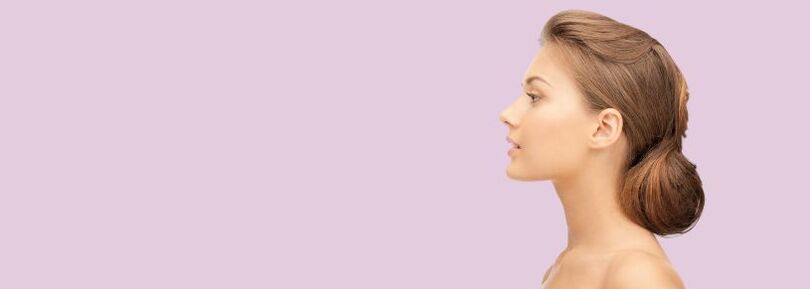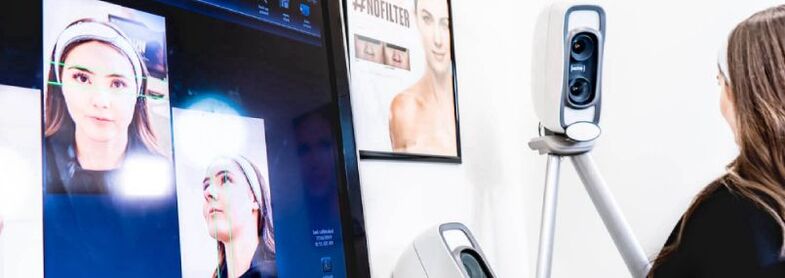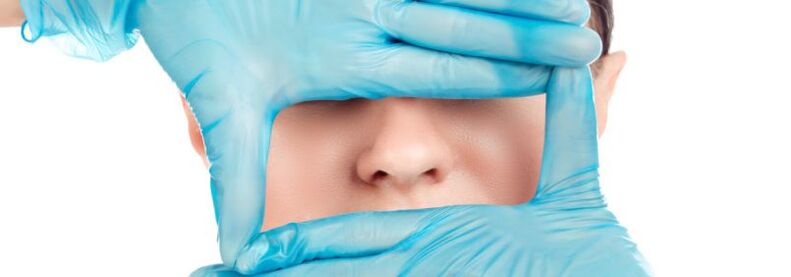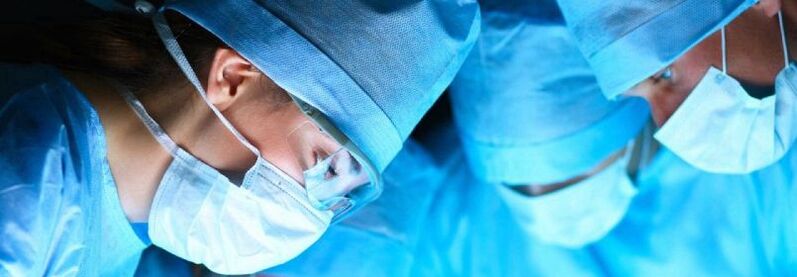
How do I know if I have indications for rhinoplasty surgery?
- The nose is disproportionate to other facial features;
- asymmetrical;
- There is a hump;
- Large or asymmetrical nostrils;
- Large tip, excessive folding or drooping;
- The back is too thick, too thin, or uneven;
- Too much or not enough length.
- Congenital or acquired nasal septum deformation;
- fracture.
What types of rhinoplasty are there?

Cosmetic rhinoplasty surgery
- Hump – removal of bone and cartilage tissue from a specific area at the back of the nose;
- Nostrils - change their shape and size, making them symmetrical;
- Columella (bridge between nostrils) - straightened or thinned;
- tip - to raise, lower, or decrease;
- Wings - make them symmetrical or less expressive.
During surgery, the doctor can not only change the shape of the nose by removing tissue, but also conversely change the shape of the nose by adding volume to the nose. To do this, he uses artificial implants or cartilage obtained from another part of the patient's body. Plastic surgeons call this surgeryrhinoplasty surgeryorgrafting.
Functional rhinoplasty (septoplasty)
If a patient who needs surgery to restore breathing decides to further correct the shape of his nose, doctors from the American Society of Aesthetic Plastic Surgeons recommend a combination of interventionsseptoplasty.
- nose reconstruction surgery- This is what the American Society of Plastic Surgeons calls interventions to correct the shape of the nose due to a congenital defect (for example, rhinoplasty for cleft palate and lip) or to reconstruct a shape altered by injury.
- Rhinoplasty surgery- This is a repeated correction of the nose. Plastic surgeons may recommend this surgery if the patient is dissatisfied with the results of previous interventions.
How is rhinoplasty performed?
How is closed rhinoplasty performed?
How is open rhinoplasty performed?
How to judge which nose is suitable for you?

Are there any preparations required for such a procedure?
- Consult a plastic surgeon. During this time, a person will state what exactly he wants to change. The doctor examines the nose, explains how realistic it is to achieve the desired result, and creates a surgical model. During your consultation, it is important to ask your doctor all of your questions, ask about pre- and post-operative limitations, and understand the risks and possible complications.
- Preoperative examination, which helps ensure there are no contraindications. It includes laboratory tests of blood and urine, electrocardiogram (ECG), and fluoroscopy.
The American Society of Plastic Surgeons recommends not smoking or taking aspirin, anti-inflammatory drugs, or herbal supplements during preparation because they can impair blood clotting.
How is rhinoplasty performed?
How does recovery work and when can I see results?

recovery
possible side effects
- Difficulty breathing;
- numbness at the surgical site;
- asymmetrical;
- pain;
- Pigmentation;
- scar;
- Holes (perforations) form in the septum.
limit
- Avoid strenuous physical activity and running;
- Do not bathe;
- Don’t blow your nose;
- Eat high-fiber foods (e. g. , fruits, vegetables) to avoid difficulty in bowel movements and thus high blood pressure;
- Smile, smile less;
- Brush your teeth carefully to avoid active movement of your upper lip;
- Choose clothes that don’t stretch over your head to reduce the risk of accidental injury;
- No glasses;
- Use sunscreen.
result
Is one operation enough to achieve results?
It’s important to understand that rhinoplasty is a surgical procedure, which means it can put stress on the body. Therefore, before agreeing to surgery, make sure you clearly understand the results you want to achieve and communicate this to your surgeon.
How is non-surgical rhinoplasty performed?
Filler Correction (Contour Rhinoplasty)
Be careful! If you decide to have contour rhinoplasty, be sure to ask your doctor which medications he uses. Some doctors recommend the introduction of biopolymers (biogels) - a synthetic substance that, unlike hyaluronic acid and collagen, is not excreted from the body. Such procedures are considered dangerous and are banned in some countries. Biopolymers can cause inflammation and migration. This means that over time, filler injected into the nose may end up in the chin, cheeks, or eye area. The biogel can only be removed through surgery, leaving scars on the face after the surgery.
Nasal fat filling
Botox injections
filament
the most important is. . .





















